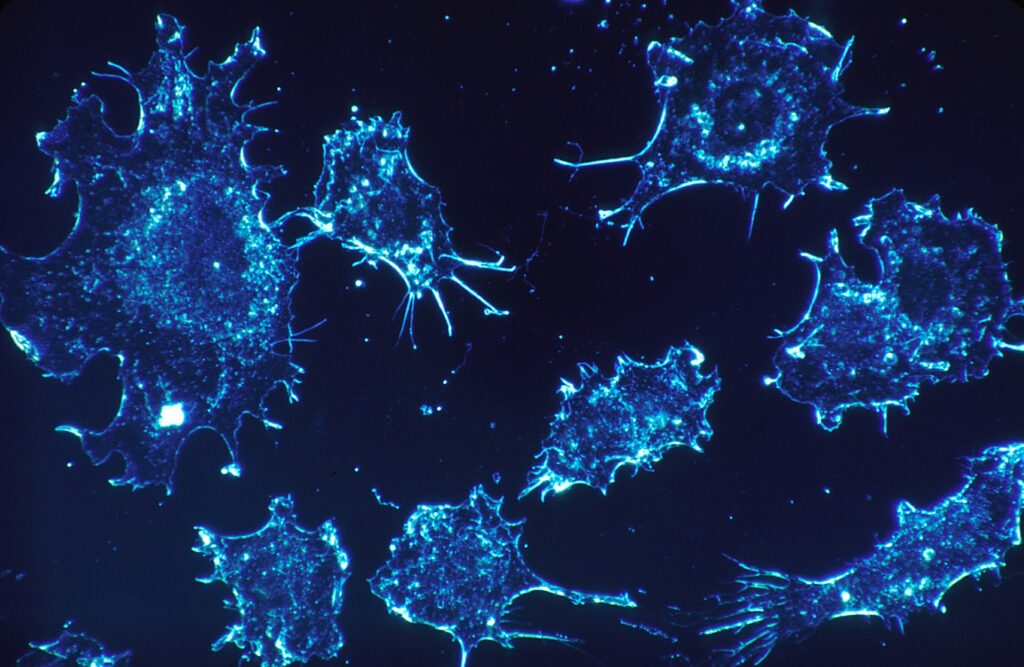Editor’s note: This book review first appeared in Health Affairs.
An average American’s likelihood of developing cancer over their lifetime is about 38 to 40 percent, and about one in five will die from this diverse set of diseases, according to the American Cancer Society. Charles Graeber’s newest book, The Breakthrough: Immunotherapy and the Race to Cure Cancer, details the centuries-long quest to find a lasting cure to cancer and details recent advances in cancer immunotherapy. Unlike many best sellers on cancer, The Breakthrough describes the agonizingly slow journey toward cancer cures in its full complexity, without ignoring the countless lives of those who could not be saved. As our society reaps the benefits of recent breakthroughs in treating cancer, Graeber’s book is both an important contribution to our understanding of the basic science of cancer treatments and a reminder of the challenges that new therapies will face from a clinical, economic, and regulatory standpoint.
The notion of leveraging our immune systems to contain cancer cells is not new: Graeber documents the attempts of physicians in the late 1800s to induce patients’ immune systems by injecting toxins, based on observations that infections reduced cancer progression. The work of physicians such as William Coley in New York is seen as the precursor to more recent, immunity-based treatment approaches. Coley was among the first to document attempts to use toxins to mobilize a body’s own defenses in containing an otherwise deadly disease, and his work led to the creation of the Cancer Research Institute by his daughter in 1953.
Graeber carefully and with great excitement documents how proficient the human body already is at fighting disease: In most instances, cancer is arrested by the immune system before it can produce any damage or mutate to avoid our existing defenses altogether, he explains. His book is particularly relevant to anyone who hopes to make greater sense of the terminology of immunotherapy (such as T and B cells, checkpoint inhibitors, and tumor antigens) without getting an advanced degree in the field.
The book chronicles key breakthroughs, many of which happened in the past few decades, which have led to today’s most promising cancer therapies: the discovery, around 1977, of interleukin-2, which stimulates the replication of vital T and B cells; the characterization in the early 1980s of the genes that encode T-cell antigen receptors; the discovery by a French team led by Pierre Golstein in 1987 of cytotoxic T-lymphocyte-associated protein 4 (CTLA-4), which plays a key role in cancer immunotherapy (and, similarly, the discovery of the important PD-1 protein in the early 1990s by a Japanese team led by Tasuku Honjo); further discoveries related to CTLA-4 by American teams led by James Allison and by Jeffrey Bluestone, eventually resulting in a pivotal trial and approval of the immunotherapy cancer drug ipilimumab; and the development of a reengineered human T cell, called CAR-T, to treat cancer.
Graeber walks the reader through the scientific jargon with sufficient, but not overwhelming, detail, and he implicitly highlights the importance of global scientific dialogue and public investment in basic science as enablers of recent advances. Graeber also acknowledges that while many patients have benefited from cancer immunotherapy, entering remission a few short weeks after receiving treatment, millions still die as the ability of cancer to adapt to the body’s defenses remains extremely potent. And so the arms race with this silent but remarkably versatile killer continues.
The Breakthrough presents a wealth of data on the above discoveries and is accompanied by nearly a hundred pages of appendices and notes. Relegating many fascinating details and anecdotes to the Notes section seems somewhat unfortunate, however, as most readers might not read those in great detail.
As scientists find new ways to treat cancer, it is likely that new treatment paradigms and nuances will emerge, making this already complex medical field even harder to understand, for patients, physicians, and policy makers alike. The Breakthrough is a captivating crash course on cutting-edge cancer treatments, offering a hopeful account of medical research that could, one day, save even more lives.
